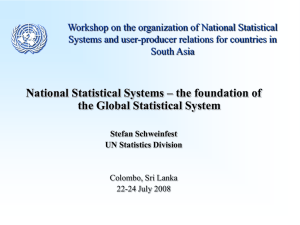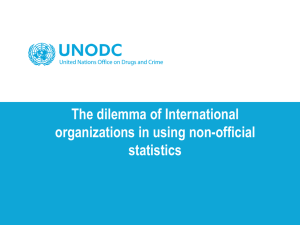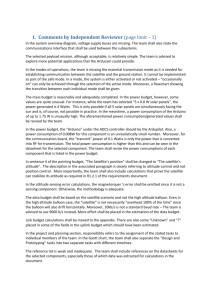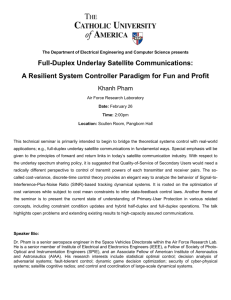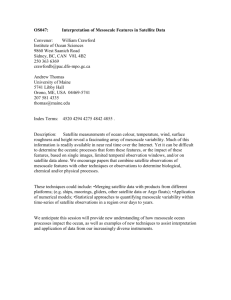Stefan Schweinfest, Acting Director, United Nations Statistical Division
advertisement
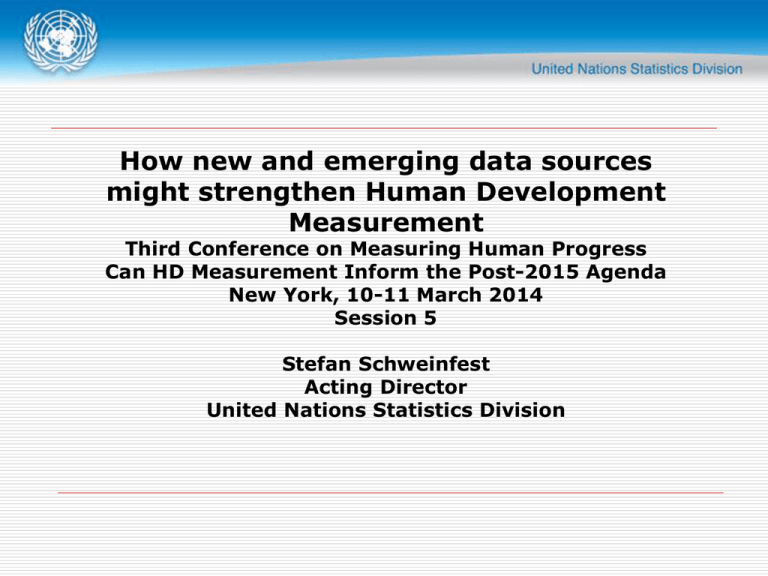
How new and emerging data sources might strengthen Human Development Measurement Third Conference on Measuring Human Progress Can HD Measurement Inform the Post-2015 Agenda New York, 10-11 March 2014 Session 5 Stefan Schweinfest Acting Director United Nations Statistics Division Expected consequences of the post-2015 1) Significant extension of data requirements in terms of scope and disaggregation 2) Increased focus on individuals well-being in all its dimensions 3) Increased role of statistics HIGH LEVEL PANEL REPORT ON POST 2015 is calling for a “data revolution” Core ideas of the proposed “data revolution” 1. Bring new information technologies (e.g. mobile technology) and statistics together to improve development data 2. Disaggregate data (by gender, geography, income,..), to make sure that “no one is left behind” 3. Better data and statistics for better accountability and better decision making “A true data revolution would draw on existing and new sources of data to fully integrate statistics into decision making, promote open access to, and use of, data and ensure increased support for statistical systems.” Main challenges for statistics: Data dimension: Fill existing data gaps and satisfy the increased requirements: new methodologies, integration with geospatial information, big data, smart IT use/methods of data capture, strengthening of existing statistical tools: household surveys, administrative sources, census/vital statistics registration, agricultural surveys, measurement frameworks (SNA/SEEA) etc. Capacity dimension Strengthen capacity at all levels; strengthen partnerships and coordination Big Data discussed by official statisticians UNSC, February 2013, Friday Seminar on “Big Data for Policy, Development and Official Statistics” 59th ISI World Statistics Congress, August 2013 discussed big data European Statistical System, September 2013, Director Generals adopted the Scheveningen Memorandum on Big Data Bureau of Conference of European Statisticians, 22 October 2013, in-depth review of Big Data UNSD and NBS China, October 2013, international seminar on Big Data and Modernizing Statistical Systems Survey of statistical offices, Fall 2013: 107 responses were received and analyzed UNSC, March 2014, SG report “Big data and modernization of statistical systems” Survey results: Sources of Big Data Administrative data: Tax, VAT and Social Security data (not regarded as ‘real’ Big Data) - share the challenges such as confidentiality and legislation Transactional sources: supermarket scanner data, phone communication, credit cards transactions and toll collection data Sensor or satellite sources: several countries use satellite imaging for survey design and land use Tracking or GPS sources: used by a few countries Behavioral data sources: not yet used Opinion or social media sources: very few countries make use Some current examples Australia, Colombia: use of satellite images of land use for agriculture statistics Bhutan: mobile communication technology for data collection for consumer price index Estonia: mobile positioning data for international travel statistics Survey results: Areas of use (in next 12 months) Scanner data or web scraping for frequently updated price indices that complement the standard consumer price index Also producer prices, real estate prices and hotel prices Mobile phone data used for travel and tourism statistics Social media sentiment for consumer confidence Web vacancy data for employment statistics Use of detailed data from highway tolls and road sensors for transportation statistics Use of satellite images of land use for agriculture statistics Potential and challenges of Big Data The existing IT infrastructure and capabilities have to be enhanced to support the processing of high-volume and high-velocity data from various sources More advanced skills for data analysis and computational informatics are necessary The Government sector will need to invest considerable efforts to establish an authorizing framework, which fosters public trust and sets out the rules for access and use of automatically generated digital data with a personal content Way forward Big Data is here to stay, and raises similar challenges and opportunities for most countries Experiences, practices and solutions can be shared Regional initiatives have started at UNECE and UNESCAP Outcome from 45th Statistical Commission was the creation of a UN Global Working Group on the use of Big Data for official statistics, which will Complement regional initiatives Address the potential use of Big Data for the post2015 development agenda Establish Big Data platform for inventory of data sources, guidelines and analytical tools Vital statistics reported to the UN DYB 2010-2012 Births Deaths Thank You ! Stefan Schweinfest Acting Director United Nations Statistics Division Schweinfest@un.org http://unstats.un.org

